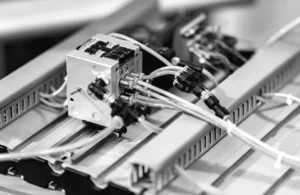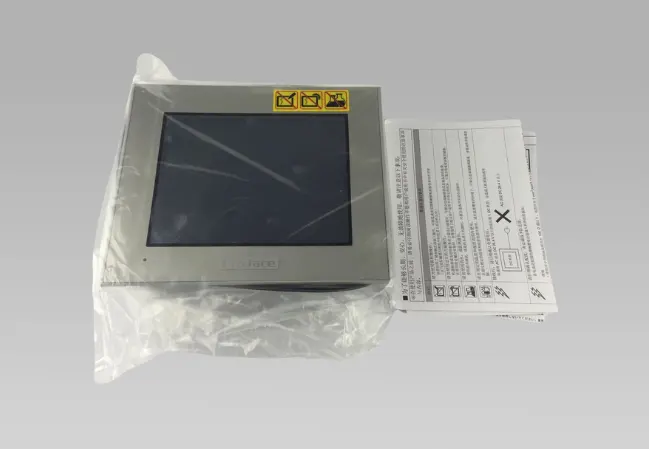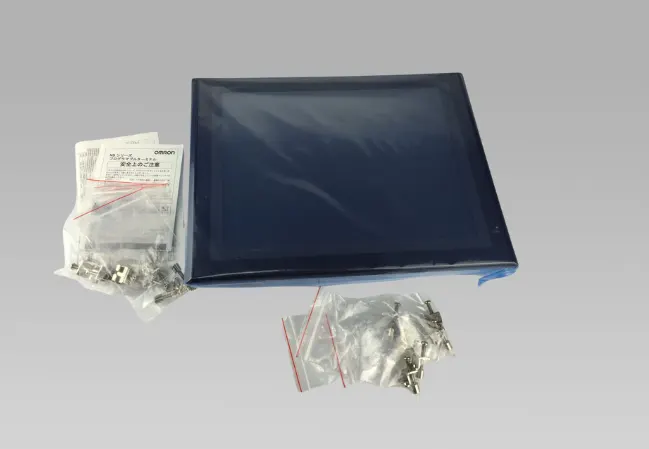Capacitive vs. Resistive Touch Screens: Which One Is Right for Industrial Use?
- kwoco-plc.com
- October 8, 2024
- 7:55 pm
Ever find yourself torn when choosing a touch screen? Especially in industrial settings, choosing the wrong one can impact efficiency and even raise costs. As an engineer at Kwoco, I understand how critical selecting the right touch screen is for smooth operations. Today, let’s dive into the differences between capacitive and resistive touch screens to help you find the perfect match.
Capacitive screens offer responsive touch, while resistive screens are more durable. But which is better for your industrial environment? Capacitive screens provide smooth operation, but resistive screens excel in harsh conditions. Each has its pros and cons, depending on specific application needs.
Let’s dig deeper and find the right solution together!
Table of Contents
Capacitive Touch Screens: Ideal for Enhanced User Experience?
Capacitive touch screens work based on the electrical charge of the human body. They’re known for their fast response time, multi-touch capabilities, and sleek design.
In my experience with clients, they often prefer capacitive screens for their smartphone-like touch experience. This is especially useful in factory automation, where operators can perform tasks quickly and efficiently.
However, these screens have their limitations. They require a clean environment—water droplets or gloves can affect accuracy. For applications where a high-quality touch experience is crucial, capacitive screens are a great choice.
Resistive Touch Screens: Better Adaptability in Harsh Environments?
Resistive touch screens take a different approach. They work by sensing pressure, meaning you can use almost anything—fingers, gloves, styluses—to operate them. This makes them ideal for extreme environments like high humidity or dusty conditions. Many of my clients, like Helen, appreciate this durability, especially in hot or humid workshops where capacitive screens might struggle.
Of course, the feel of resistive screens is not as smooth as that of capacitive screens. But for applications that require precision in challenging environments, resistive screens are a safe bet.
6 Key Questions When Choosing a Touch Screen?
- Will my operating environment impact the screen’s performance?
- Do I need multi-touch functionality?
- Does the touch screen need to be waterproof or dustproof?
- Will operators need to wear gloves while using the screen?
- Is high touch sensitivity necessary for my operations?
- Within my budget, is there a more cost-effective choice?
These are the questions I always ask when helping clients choose the right product. They’re also essential for any engineer looking for the perfect touch screen solution.
Comparing Application Scenarios of Capacitive and Resistive Screens
Generally, if your environment is clean and you prioritize touch experience—like in a smart production line—a capacitive screen is the way to go. Its sensitivity and quick response time align well with modern production demands.
On the other hand, if you’re dealing with harsh conditions like high moisture, dust, or temperature fluctuations, a resistive screen’s durability and resistance to external factors make it more suitable.
Many of our clients have found that resistive screens perform exceptionally in these conditions, unaffected by the environment.
How Do Capacitive and Resistive Screens Compare in Price?
People often assume that capacitive screens are more expensive, but this depends on your specific needs. If you require large sizes with high sensitivity, capacitive screens can indeed be costly.
However, for standard sizes, the price difference between capacitive and resistive screens is not significant. At Kwoco, we strive to provide high-quality products that offer the best value for our clients.
FAQ: Common Questions Answered
1. Which is more durable in industrial applications, capacitive or resistive touch screens?
Resistive touch screens are generally more durable in harsh environments, as they can resist dust, moisture, and other external factors. Capacitive screens are better suited for cleaner environments.
2. Can I use gloves to operate a capacitive touch screen?
Most capacitive screens do not respond well to gloves, though some industrial-grade options can support specific types of gloves. Resistive screens are better if gloves are a necessity.
3. How do I choose the right type of touch screen for my application?
If your work environment is tough, with high moisture or dust, choose a resistive touch screen. For smooth touch experiences and multi-touch functions, opt for capacitive screens.
4. Do capacitive touch screens get affected by temperature changes?
Yes, extreme temperatures can affect the sensitivity of capacitive touch screens. In contrast, resistive screens are more stable and can perform better in environments with significant temperature variations.
Power your projects with brand-new, original Omron, Proface, Schneider HMI – in stock, ready now!
Conclusion
Choosing a touch screen is all about finding the right match for your needs. Understand your operating environment, clarify your touch requirements, and compare the characteristics of different screens to make an informed choice.
For more detailed guidance, feel free to reach out to me at [email protected]. I’m always here to help you with any technical questions you might have!
Contact Us
Just fill out your name, email address, and a brief description of your inquiry in this form. We will contact you within 24 hours.

Why Your PLC Needs a Separate Power Supply
Why Your PLC Needs a Separate Power Supply Have you ever wondered why PLC systems often require a separate power

Why Your Business Needs a Variable Frequency Drive
Why Your Business Needs a Variable Frequency Drive When managing industrial operations, optimizing energy efficiency while maintaining performance is crucial.

Why Signal Isolation is Crucial for Omron PLCs?
Why Signal Isolation is Crucial for Omron PLCs? In the world of industrial automation, signal interference is a silent killer.


